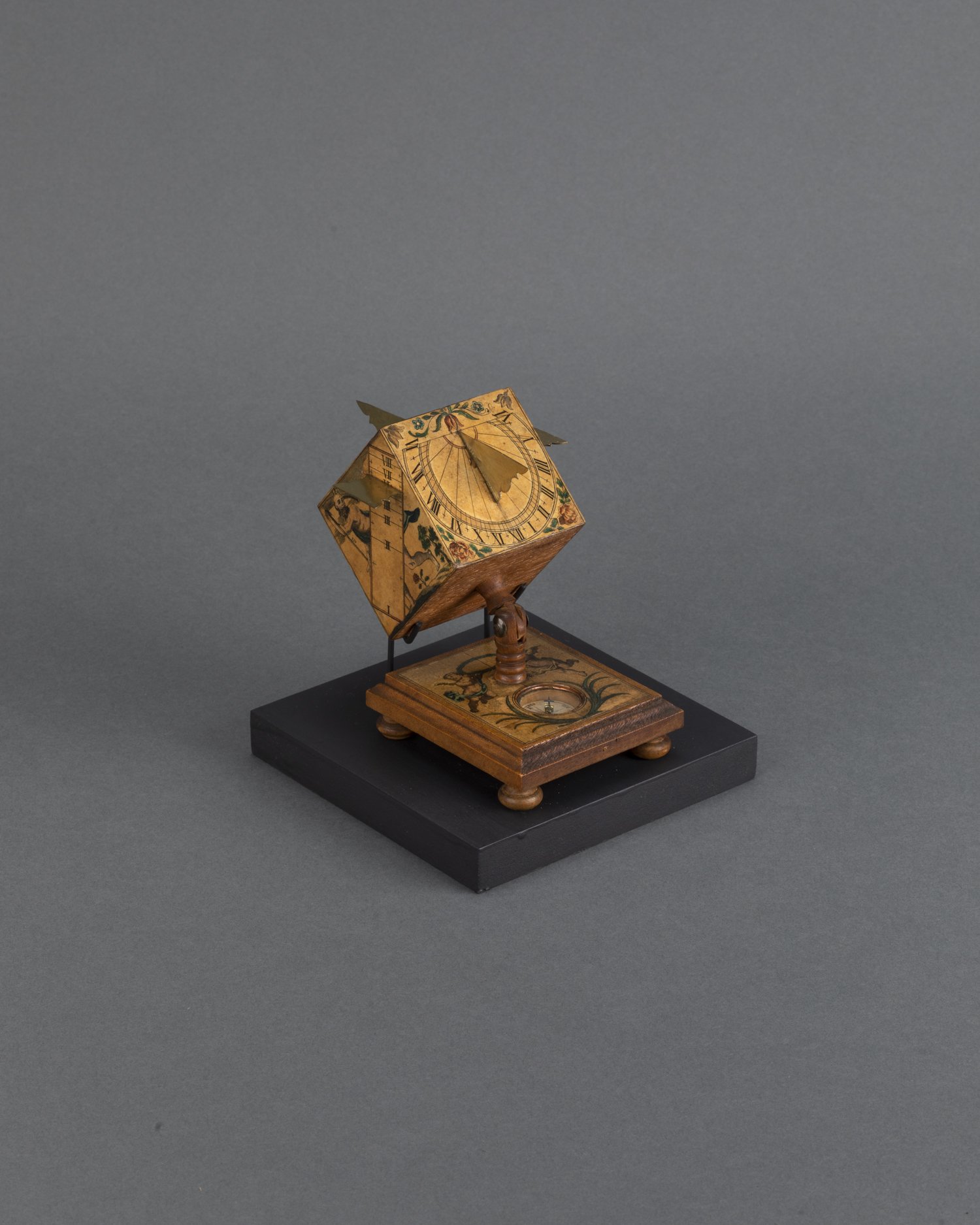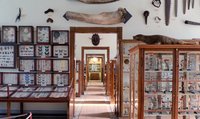Ein ausgesprochenes Repräsentationsobjekt ist diese Würfelsonnenuhr, die wahrscheinlich um 1810/20 in Nürnberg bei Paul Philipp Behringer entstand. Der Würfelkörper ist mittels einer kurzen Säule über ein Scheibengelenk auf einer Grundplatte mit Balusterfüßen befestigt. Der Kompass ist in die Grundplatte eingefügt. Über ein Fadenlot und eine Skala ist die Sonnenuhr auf verschiedene Polhöhen einstellbar. Die Schattenwerfer sind als an den Rändern profilierte Messingbleche gestaltet.
Der Bild-Schmuck mittels aufgeklebten Kupferstichen ist aufwendig: Palmwedel, Tulpen, Rosen, Fruchtzweige, Engel, eine dörfliche Winterlandschaft, eine Sommerlandschaft mit schwarzem Raubvogel und eine große Chronosfigur mit Sense und Stundenglas (Sanduhr) zieren das gesamte Stück.
Belegt im Linck-Index III (1787), S. 127, Nr. 314: "Horologium solare, quinquangulare. Eine Sonnenuhr mit fünf Seiten (aufgest. No. 314)".
en

